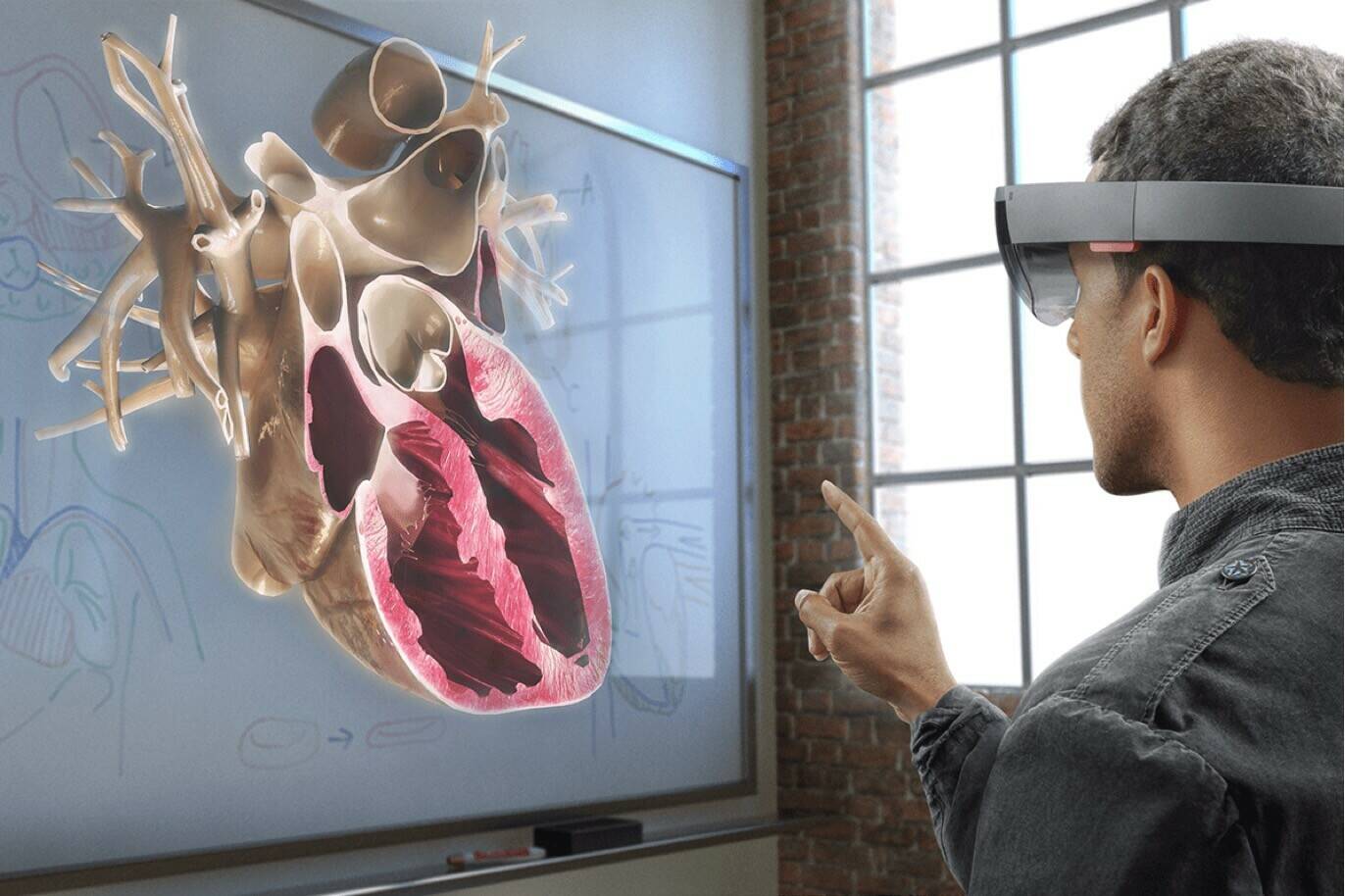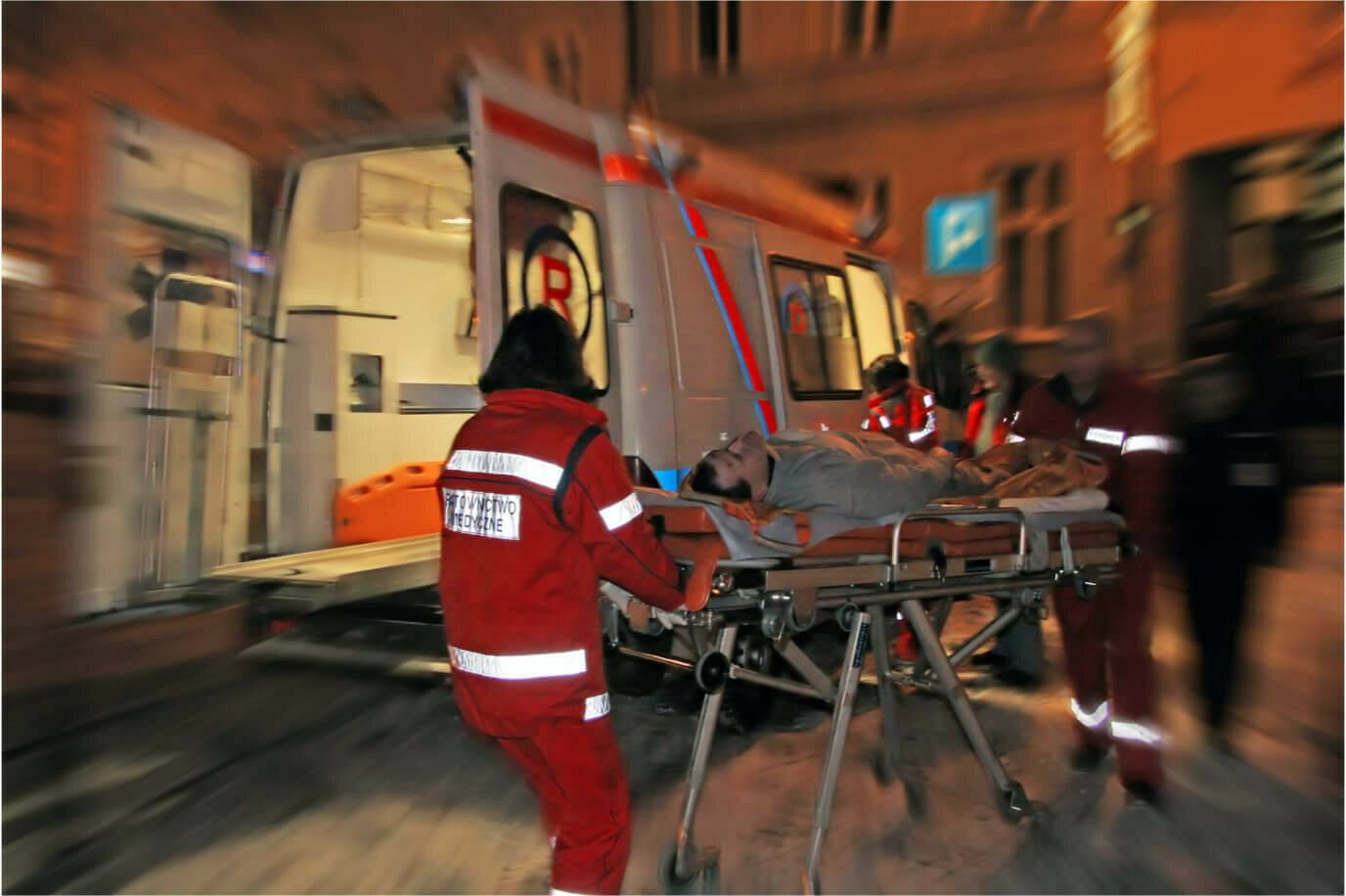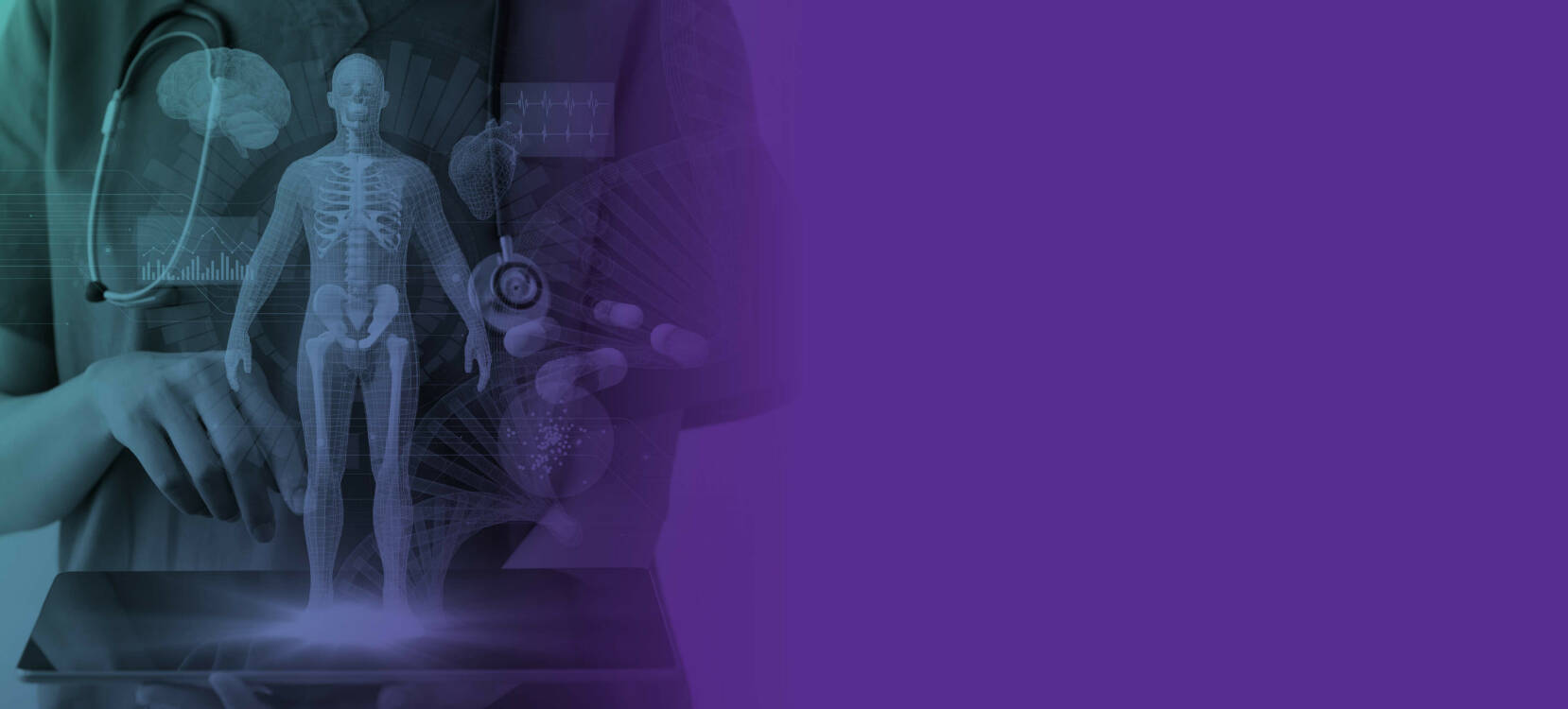Easy remote monitoring via all kinds of apps and systems.
Enjoying a comfortable (in-room) experience.
Navigate easily and efficiently within the hospital using Guest Wi-Fi, digital signage and more.
Easy appointment scheduling thanks to easy phone access
- Contact a smart hospital

- Discharge from hospital

- Staying in a smart hospital


- Wayfinding in a smart hospital
Technology can greatly improve patients' experiences before, during and after a hospital stay, from the first contact until after discharge.
Lifelong learning with extended reality
Lifelong learning becomes a lot easier with extended reality. Complex situations can be simulated as realistically as possible so that the medical staff can keep up with the latest techniques and procedures.
- With extended reality, a virtual environment can be created where students can safely try out and practice new procedures.
- Students can follow operations 'through the eyes of the surgeon'.
The Result
The Solution
The Challenge
In the healthcare sector, lifelong learning is of vital importance, but managing this efficiently, taking into account the continuous workload and chronic staff shortages, is not self-evident.
- Procedures need to be learned but mimicking real situations is often difficult.
- Classroom training takes up a lot of time.
- Remote sharing and discussion of medical records does not always go smoothly.


Proven track record
Transport via drones at GZA Hospitals
Customer Story
GZA Hospitals is testing drones to transport pharmacy preparations and samples of blood, urine and human tissue more efficiently between hospital campuses. Helicus is responsible for the drone transports. This 5G application is very interesting for such mission-critical transports.
Connected ambulances
A more correct treatment can be delivered from the start of the intervention and preparations in the hospital are smoother. In life-threatening situations, valuable time can be gained.
In `connected ambulance’, medical experts from the hospital can assist with initial care via video calls and smartglasses. The data generated by the patient monitoring can be forwarded directly. Preparations in the hospital can also be optimized (e.g. preparation of an operating room or calling in additional specialists).
It is impossible to have every medical expertise on board during an intervention. At the same time, it is difficult for hospitals to correctly assess how the arrival of certain patients can be optimally prepared. But in an emergency, every second counts.
The Result
The Solution
The Challenge
5G-connected ambulances are an innovative way to connect patients and ambulance providers with remote medical experts in real time.

A continuous focus on innovation remains an absolute must for our Belgian healthcare sector. In our final chapter, we will go deeper into how we can support your business more specifically.
Proximus has developed the 5G innovation platform for organizations that want to discover what 5G can do for them, but do not know how to get started. In co-creation, a 5G test is set up that provides you with the necessary insights. The test itself can be done on your own site (provided it is equipped with 5G coverage) or at the test site in the Proximus offices in Brussels.
How the process works:
- We will evaluate some 5G ideas with you.
- We will pick out one idea.
- We will test your devices or provide devices ourselves.
- We implement and validate the idea. This takes, on average, about three months.
- Both during and at the end of the test, there will be plenty of information shared regarding security, IoT, cloud and edge computing.
If the final evaluation is positive, you can decide to proceed to a broader rollout or to conduct a new test, including adjustments.

1
improve the patient experience

2
5G innovation platform

chapter 6
continued innovation
Maar wat leveren die data nu concreet op? De tweede horde die maakbedrijven nemen, is die data op een overzichtelijke en efficiënte manier aan de medewerkers presenteren.
Guy De Winne (ST Engineering): “De voorbije jaren verzamelden we heel wat data, maar die zat verspreid over verschillende databases, zowel vanuit de productie en machines als uit de ondersteunende diensten. We wilden ervoor zorgen dat alle informatie gecentraliseerd werd in één datacube met verschillende views. Zodat elke medewerker vlot de juiste informatie voor zijn functie uit die centrale database kan halen.”
Healthcare in our country is world-class and we want to continue to support this by improving and simplifying the professional life of all healthcare providers in all its aspects. We see that hospitals have organized themselves to be at the front of the innovation pack, while the speed of innovation in healthcare is only increasing.
chapter 6
Innovation sometimes remains a difficult issue in hospitals, where certainty and reliability of care is often considered more important. Nevertheless, the current collaboration between different hospitals provides more space, budget and personnel for innovative research. With this paradigm shift, there is a greater focus on the right tools and technologies to support the professional lives of healthcare staff, thereby allowing them to optimally focus on patient care.
There are many options for this, from alarm systems linked to advanced telephony to innovations such as asset tracking and IoT-based geolocation.






Lifelong learning becomes a lot easier with extended reality. Complex situations can be simulated as realistically as possible so that the medical staff can keep up with the latest techniques and procedures.
The Result
- With extended reality, a virtual environment can be created where students can safely try out and practice new procedures.
- Students can follow operations 'through the eyes of the surgeon'.
The Solution
In the healthcare sector, lifelong learning is of vital importance, but managing this efficiently, taking into account the continuous workload and chronic staff shortages, is not self-evident.
- Procedures need to be learned but mimicking real situations is often difficult.
- Classroom training takes up a lot of time.
- Remote sharing and discussion of medical records does not always go smoothly.
The Challenge
Lifelong learning with extended reality
GZA Hospitals is testing drones to transport pharmacy preparations and samples of blood, urine and human tissue more efficiently between hospital campuses. Helicus is responsible for the drone transports. This 5G application is very interesting for such mission-critical transports.
Customer Story
Transport via drones at GZA Hospitals
The Result
It is impossible to have every medical expertise on board during an intervention. At the same time, it is difficult for hospitals to correctly assess how the arrival of certain patients can be optimally prepared. But in an emergency, every second counts.
The Solution

A continuous focus on innovation remains an absolute must for our Belgian healthcare sector. In our final chapter, we will go deeper into how we can support your business more specifically.




Proximus has developed the 5G innovation platform for organizations that want to discover what 5G can do for them, but do not know how to get started. In co-creation, a 5G test is set up that provides you with the necessary insights. The test itself can be done on your own site (provided it is equipped with 5G coverage) or at the test site in the Proximus offices in Brussels.
How the process works:
- We will evaluate some 5G ideas with you.
- We will pick out one idea.
- We will test your devices or provide devices ourselves.
- We implement and validate the idea. This takes, on average, about three months.
- Both during and at the end of the test, there will be plenty of information shared regarding security, IoT, cloud and edge computing.
If the final evaluation is positive, you can decide to proceed to a broader rollout or to conduct a new test, including adjustments.
A more correct treatment can be delivered from the start of the intervention and preparations in the hospital are smoother. In life-threatening situations, valuable time can be gained.
In `connected ambulance’, medical experts from the hospital can assist with initial care via video calls and smartglasses. The data generated by the patient monitoring can be forwarded directly. Preparations in the hospital can also be optimized (e.g. preparation of an operating room or calling in additional specialists).
The Challenge
Connected ambulances
5G-connected ambulances are an innovative way to connect patients and ambulance providers with remote medical experts in real time.

Easy remote monitoring via all kinds of apps and systems.

- Discharge from hospital
Enjoying a comfortable (in-room) experience.

- Staying in a smart hospital
Navigate easily and efficiently within the hospital using Guest Wi-Fi, digital signage and more.

- Wayfinding in a smart hospital
Easy appointment scheduling thanks to easy phone access

- Contact a smart hospital
Technology can greatly improve patients' experiences before, during and after a hospital stay, from the first contact until after discharge.

Proven track record
Innovation sometimes remains a difficult issue in hospitals, where certainty and reliability of care is often considered more important. Nevertheless, the current collaboration between different hospitals provides more space, budget and personnel for innovative research. With this paradigm shift, there is a greater focus on the right tools and technologies to support the professional lives of healthcare staff, thereby allowing them to optimally focus on patient care.
There are many options for this, from alarm systems linked to advanced telephony to innovations such as asset tracking and IoT-based geolocation.
Healthcare in our country is world-class and we want to continue to support this by improving and simplifying the professional life of all healthcare providers in all its aspects. We see that hospitals have organized themselves to be at the front of the innovation pack, while the speed of innovation in healthcare is only increasing.
chapter 6
